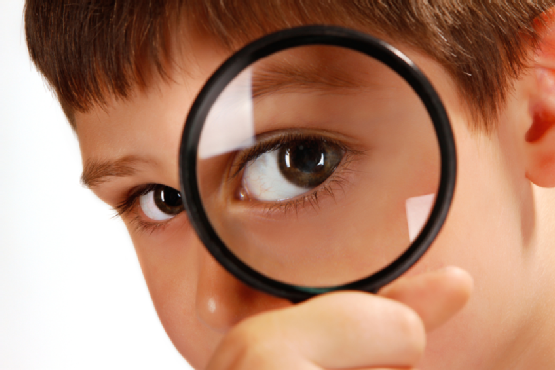Nearly 80% of what a child learns in school is presented visually. Vision plays a crucial role in your son or daughter’s development, so it’s important to know how to address vision problems in children as soon as possible.
Schedule a First Eye Exam Early
To make sure your child’s vision needs are addressed early, you should schedule his or her first eye exam at 6 months of age. An optometrist or ophthalmologist can determine if your child’s eyes are functioning according to the child’s current stage of development and make sure both eyes are working in concert with one another.
Nearsightedness and Farsightedness
Generally, children develop nearsightedness between the ages of eight and fifteen. Mild farsightedness is not a problem in young children, because it’s actually common in development. However, if your child’s close-up vision is extremely blurry or if his or her eyes tend to cross when looking at close objects, there could be a vision problem. Your optometrist should be able to recognize if your child’s farsightedness is a problem at the age of 2.
Glasses and Lazy Eye
Wearing glasses as a child will not make your child more dependent on them later. Children need glasses to simply correct vision issues associated with a genetic condition. Glasses or contacts will probably be needed throughout their life in order to maintain good vision. Glasses can actually protect your child’s eyesight by preventing the development of amblyopia, more commonly known as lazy eye. Lazy eye occurs when one eye is more out of focus than the other. By tailoring the prescription glasses lens to meet each eye’s needs, amblyopia can be prevented.
Parents and caretakers should schedule regular eye exams throughout their child’s development to ensure that his or her eyesight remains the best it can be. To schedule an exam, contact Boston Laser. Our doctors perform regular eye exams and the latest, state-of-the-art vision correcting technologies and laser eye surgeries. Call us today at (617) 566-0062 for more information.
